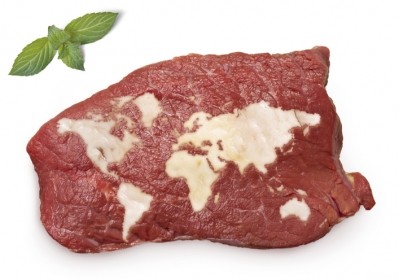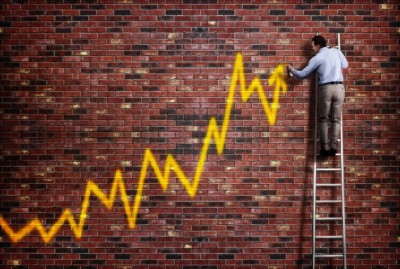Coronavirus impact on Chinese feed demand, US corn and soybean prices

In a podcast, China grain and oilseeds analyst, Rabobank, Lief Chiang, and Michael Magdovitz, senior analyst, Rabobank's agricultural commodities market research, discussed the spread of that virus and the threat it poses to already fragile Chinese and global feed demand.
The coronavirus outbreak in China is compounding a series of challenges for its farmers and feed millers, given those sectors were in recovery mode after last year trade’s war between Beijing and the US, coupled with the fallout on meat production from the outbreak of African Swine Fever (ASF).
The spread of the coronavirus in China has caused extended employee absence from work, temporary transportation controls, and lower downstream consumption, but major disruption to the Chinese livestock farming and feed production industries, said Chiang.
“Among all animal species, poultry is being hit the hardest in the first quarter, particularly yellow-feathered broilers, as a result of the closure of the live bird market in China since the outbreak of the virus. Facing discouraging margins and weak demand, we have observed that many small and medium-scale of poultry farms are lowering their daily [ration amounts] and even culling chickens to reduce feed costs. Aside from this, the virus spread is also postponing China’s hog herd rebuilding despie ASF slowing down in the country. Construction of new hog farms is being suspended due to logistical challenges and labor shortages.”
Aquaculture is less impacted by the coronavirus outbreak as its peak season runs from May to October, but the analyst noted that weak demand in the foodservice channel in China may also slow aquafeed growth.
“We believe that Chinese feed consumption will continue to decline in the first quarter and also likely in the early second quarter. Assuming no reoccurrence of the coronavirus and the ASF is increasingly under control, we expect a strong rebound of feed consumption [in China] in the second half of the year. The main driving forces for such a rebound include high meat prices, production expansion of white-feathered broilers and also layers, hog herd restocking, starting from the third quarter, and last, but not least, the recovery in demand in group dining and food service in China,” said the analyst.
Overall, Rabobank’s base scenario is that Chinese feed consumption will still show marginal growth of 2-3% in 2020, followed by a slightly stronger rebound in 2021.
Feed additive price spikes
The coronavirus is having an impact on the feed additives market too, creating a sharp increase in vitamin prices, according to the feed additive pricing platform.
After a drop of 31%, European prices of Vitamin A 1000 spiked by 27% over the last two weeks, it said. he current price is estimated at $84.6/KG with the highest sale recorded reaching $89.2/KG, while prices of Vitamin E50 in Europe also soared, by 44%. The current price is estimated at $8.68/KG with the highest sale recorded reaching $9.26/KG.
Around the world, prices of Vitamin B7 Biotin 2% jumped by 68% over the last two weeks. The current price is estimated at $35.3/KG with the highest sale recorded reaching $46/KG.
After a drop of 73% across Europe, prices of Vitamin B9 Folic Acid spiked by 65% over the last two weeks, reported Glowlit. The current price in Europe is estimated at $48.4/KG with the highest sale recorded reaching $50.7/KG.
Glowlit is a crowdsourcing tool that gives users free regionally-based price reports on a range of animal feed additives – the data comes directly from purchasing managers.
Implications for ‘phase-one’ trade deal, US summer plantings
Chinese soybean imports, though, are being hit by the virus, with Rabobank recently lowering its forecast for Chinese 2019-2020 imports.
Magdovitz evaluated the implications of coronavirus on China’s 'phase-one' trade deal compliance, US summer plantings, and Chicago Board of Trade (CBOT) corn and soybean prices through 2020.
“From the US farmers’ point of view, the near-term depressive effects of coronavirus on Chinese feed demand growth and internal logistics is particularly acute for soybeans. We now anticipate a year of tepid global meal demand growth of around 2%, which also follows the ASF trade war hangover. The combined two years of lackluster or even negative growth is actually being reflected in the CBOT price of soybeans, which is currently below US$9 per bushel,” he said.
The risks have grown for US corn farmers as well, with the spread of coronavirus into Japan and South Korea, he said.
“These two countries represent around a third of US exports of corn, if we look at last year,” said Magdovitz.
The next six months were supposed to be an export boon for US corn with South America largely sidelined until July supplies come online, he said.
“The prospects of weaker global demand during the period in addition to likely delays to US-Chinese trade deal procurement are actually foreboding for CBOT corn demand particularly ahead of what we expect to be the largest corn plantings in the US since 2016-2017.”
The silver lining for US farmers and CBOT prices is that declining prices in both CBOT corn and soy before the plantings are likely to limit acreage expansion in the US, allowing for a supply side buffer against the current feed demand shock from the coronavirus, said the analyst.














